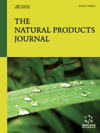
Full text loading...
We use cookies to track usage and preferences.I Understand

The investigation of computational techniques to forecast the bioactivity of natural substances has been spurred by the growing interest in utilizing their medicinal potential. A branch of artificial intelligence called deep learning has been particularly useful for predicting outcomes in a variety of fields, such as bioactivity prediction and drug discovery, by evaluating large amounts of complex data. An overview of current developments in the application of deep learning techniques to the prediction of natural chemical bioactivity has been presented in this article. The advantages provided by deep learning approaches, such as convolutional neural networks (CNNs), recurrent neural networks (RNNs), and graph neural networks (GNNs), have been highlighted, and the difficulties connected with conventional methods of bioactivity prediction have been examined. Moreover, a variety of molecular representations—such as molecular fingerprints, graph representations, and molecular descriptors—that are fed into deep learning models have been studied. Additionally, included in this study is the integration of many data sources, including omics data, chemical structures, and biological tests, to enhance the precision and resilience of bioactivity prediction models. Furthermore, this review covers the uses of deep learning in target prediction, virtual screening, and poly-pharmacology study of natural substances. The paper concludes by discussing the field's present issues and potential paths forward, such as the requirement for standardized benchmark datasets, the interpretability of deep learning models, and the incorporation of experimental validation techniques. All things considered, this study sheds light on the most recent developments in deep learning techniques for estimating the bioactivity of natural substances and their possible effects on drug development and discovery.

Article metrics loading...

Full text loading...
References


Data & Media loading...